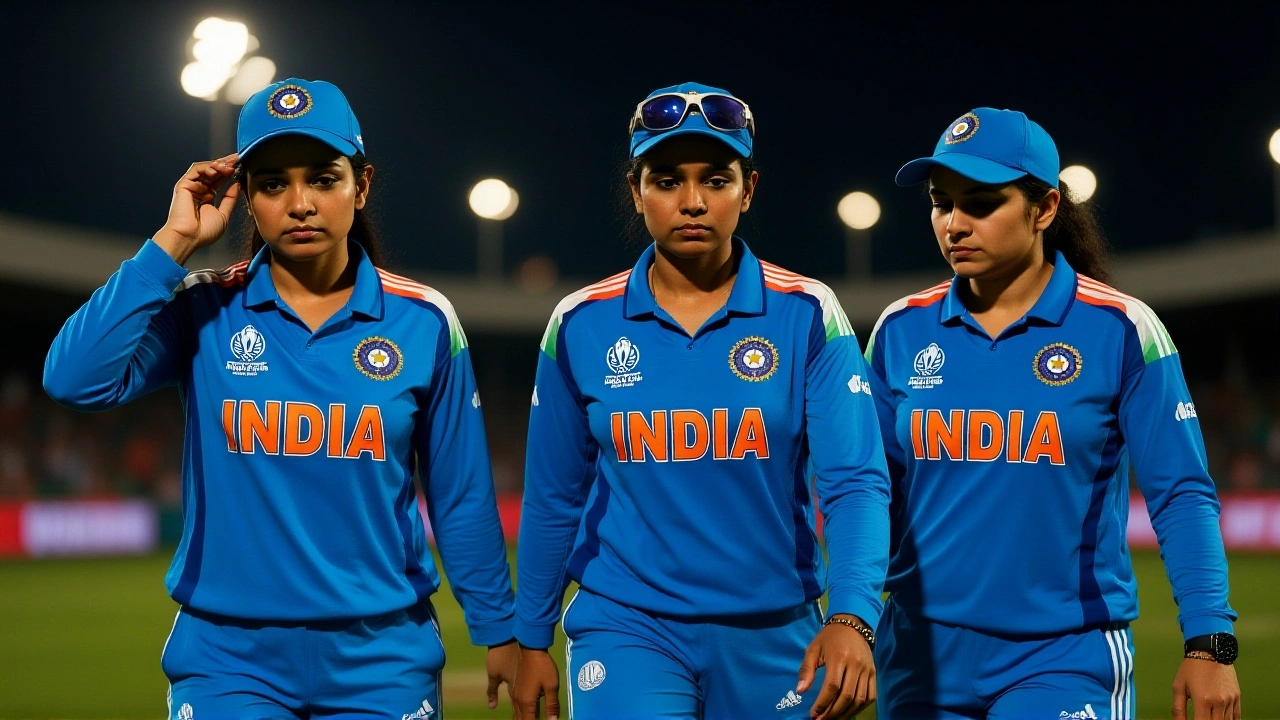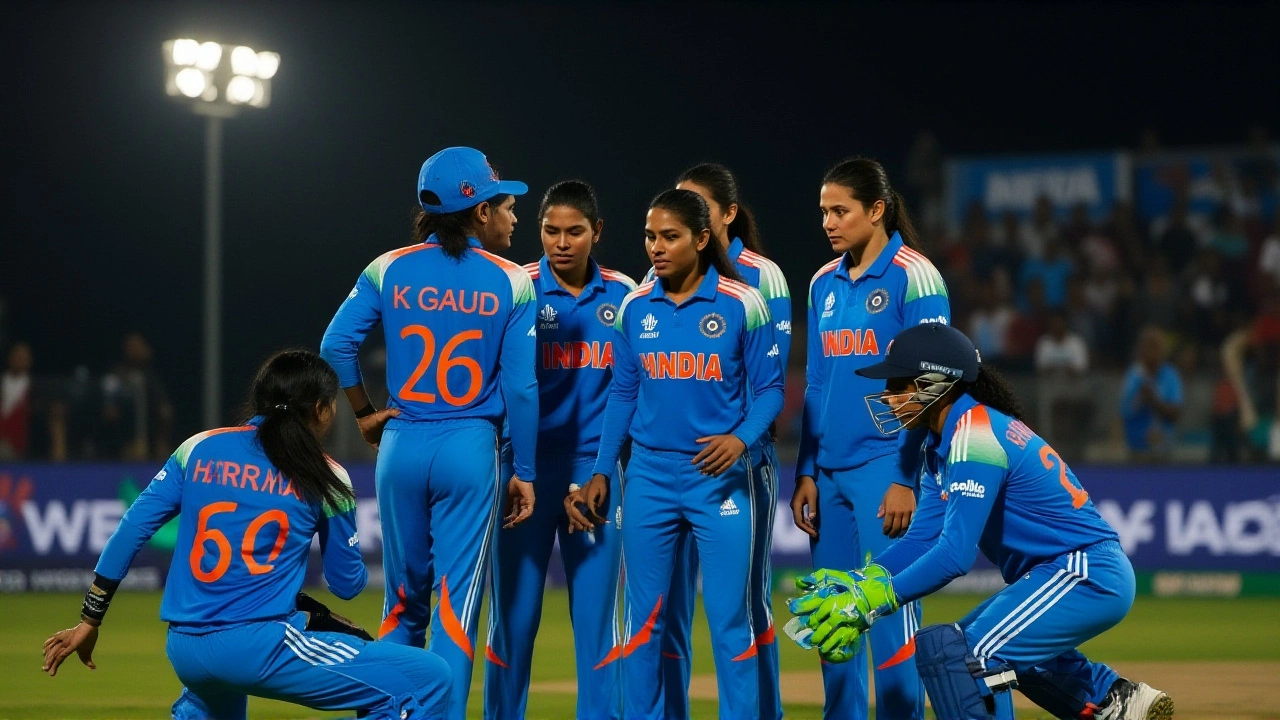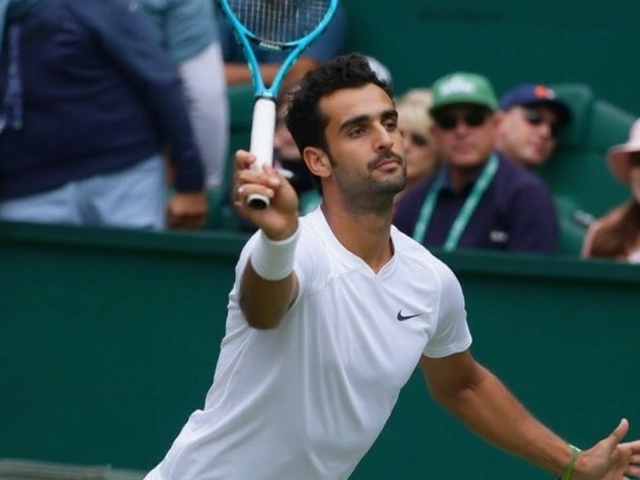When Harmanpreet Kaur, captain of the Indian women's cricket team steered her side to a 53‑run victory over New Zealand women's cricket team at Dr DY Patil Stadium in Navi Mumbai on 24 October 2025, the semi‑finals of the ICC Women’s Cricket World Cup 2025India were finally set.
India posted 340/3 in 49 overs before rain shaved an over off the innings. The Duckworth‑Lewis‑Stern (DLS) method reset New Zealand’s target to 325 off 44 overs, and they could only muster 271/8. The win locked India into the last semi‑final berth alongside Australia women's cricket team, England and South Africa.
Match Recap: India vs New Zealand
Opener Smriti Mandhana blazed a century, anchoring a massive 202‑run partnership with fellow centurion Pratika Rawal. Their stand laid the platform for middle‑order dynamo Jemimah Rodrigues, who added a quick‑fire 76. "We knew the rain could bite us, but the batting depth gave us the cushion we needed," Kaur said in the post‑match interview.
New Zealand’s chase started bright‑eyed with a 50‑run opening partnership, but wickets fell at regular intervals. The DLS target proved too steep once India’s bowlers tightened the line – Anjali Sarangi claimed three wickets for 28 runs. "We fought until the very last ball, but the numbers just weren’t on our side," New Zealand captain Sophie Devine admitted.
How the Wins Tiebreaker Secured India’s Spot
The ICC’s points table awards two points per win. India, Australia, England and South Africa all finish the group stage on six points, but the first tiebreaker is the number of victories. India’s three wins – against Sri Lanka, Pakistan and New Zealand – edge them past New Zealand, who sit on two wins despite still having a game against Bangladesh. "The rule about ‘most wins’ is simple but harsh. It rewarded consistency early in the tournament," explained former cricketer‑turned‑analyst Raj Siddharth of Khel Now Cricket.
Bangladesh, with one win, cannot catch up, leaving New Zealand’s fate hanging on their final match against England – a result that will not affect India’s semi‑final berth.
Tournament Landscape and Other Contenders
Australia entered the tournament as defending champions and topped the table with 11 points from six matches, their only blemish a no‑result against Bangladesh. England and South Africa sit on eight and six points respectively, both earning their spots by virtue of win‑count and net‑run‑rate. The West Indies, former semi‑finalists in 2022, missed out on qualification for the first time since 2000 – a sobering reminder of how quickly fortunes can change in women’s cricket.
Meanwhile, the host nation’s venues, from the coastal greenery of Chennai to the high‑tech stadiums of Navi Mumbai, have seen packed stands and electric atmospheres, bolstering the sport’s growing fan base across the sub‑continent.

What the Semi‑Finals Mean for India
Securing the fourth spot not only validates the team’s earlier dominance over Sri Lanka and Pakistan, but also restores confidence after a mid‑tournament slump that saw three straight losses to South Africa, Australia and England. “Every setback taught us something. This win feels like redemption for the whole camp,” Rawal reflected. The upcoming semi‑final on 29 October will pit the table‑toppers – Australia – against India as the fourth‑placed side. Cricket pundits predict a nail‑biter; Australia’s firepower, led by captain Meg Lanning, is formidable, yet India’s top‑order firepower could swing momentum. If India prevails, they would face the winner of the second‑vs‑third semi‑final – likely England or South Africa – at the Narendra Modi Stadium in Ahmedabad on 2 November. A final at the world‑sized venue would be symbolic: a home crowd, a larger stage, and the chance to etch the 2025 tournament into Indian cricket lore.
Looking Ahead: Final Match and Legacy
Beyond trophies, the tournament is shaping the narrative of women’s sport in South Asia. TV ratings in India have surged 45 % compared with the 2017 edition, and grassroots participation among girls aged 8‑16 has risen according to a report by the International Cricket Council. The ICC’s growth‑centric policies, including increased prize money and enhanced broadcast deals, are paying dividends. As Kaur noted, “We’re playing for more than a medal; we’re inspiring the next generation.”
Frequently Asked Questions
How does India’s semi‑final qualification affect the team’s World Cup chances?
Qualifying as the fourth‑seed gives India a direct clash with the tournament‑leading Australia. While the odds are tough, India’s top‑order firepower — highlighted by Mandhana and Rawal’s centuries — gives them a realistic shot at an upset and a place in the final at Ahmedabad.
What role did the DLS method play in the India‑New Zealand match?
Rain forced the reduction of New Zealand’s chase to 44 overs with a target of 325. The DLS calculation meant they needed a run‑rate significantly higher than India’s original 340/3, compressing the margin for error and amplifying the impact of each wicket.
Why did New Zealand fail to qualify despite having matches in hand?
The ICC’s primary tiebreaker ranks teams by number of wins. New Zealand’s two victories fell short of India’s three, and even a win in their final group game would not overturn the win‑count deficit.
Which venues will host the semi‑finals and final?
The first semi‑final (Australia vs India) is slated for 29 October at Wankhede Stadium in Mumbai. The second semi‑final (England vs South Africa) will be at M. Chinnaswamy Stadium in Bangalore. The championship final takes place on 2 November at the Narendra Modi Stadium in Ahmedabad.
What impact does the tournament have on women’s cricket development in India?
The World Cup has sparked a surge in viewership and grassroots enrollment. According to the ICC, participation among girls under 15 grew by 27 % during the tournament window, and several state cricket boards have announced new scholarship programmes for young female talent.



